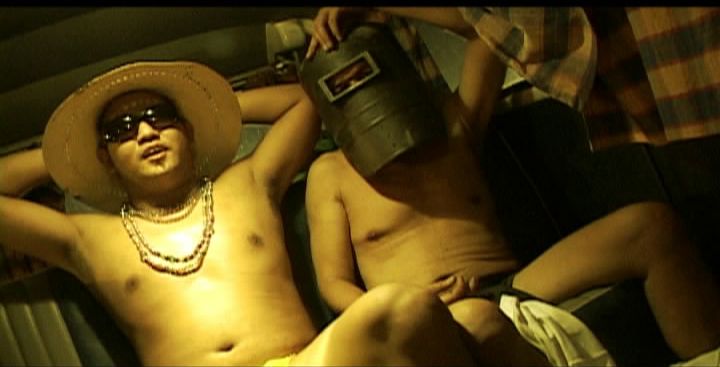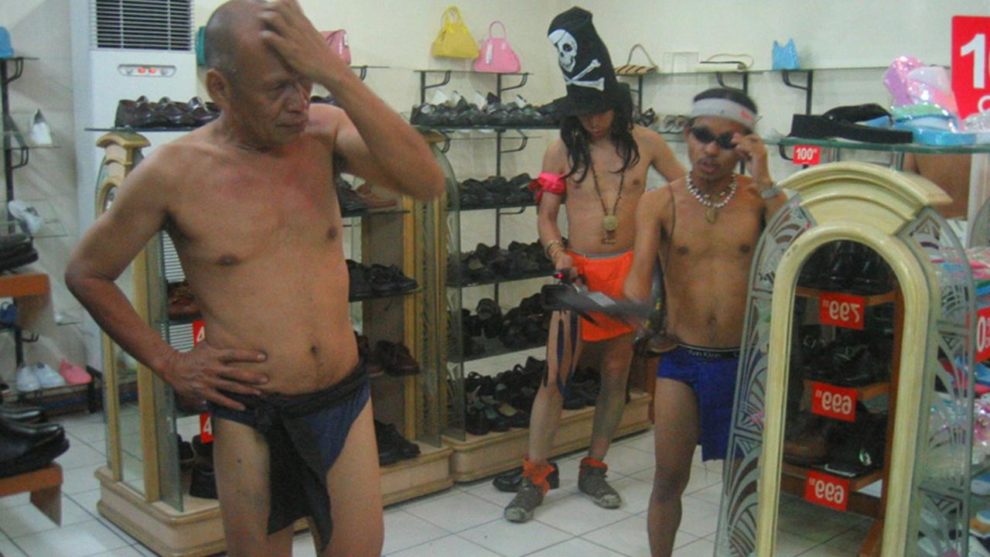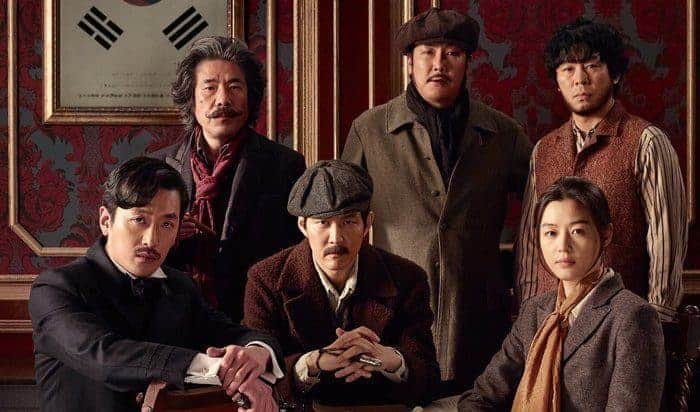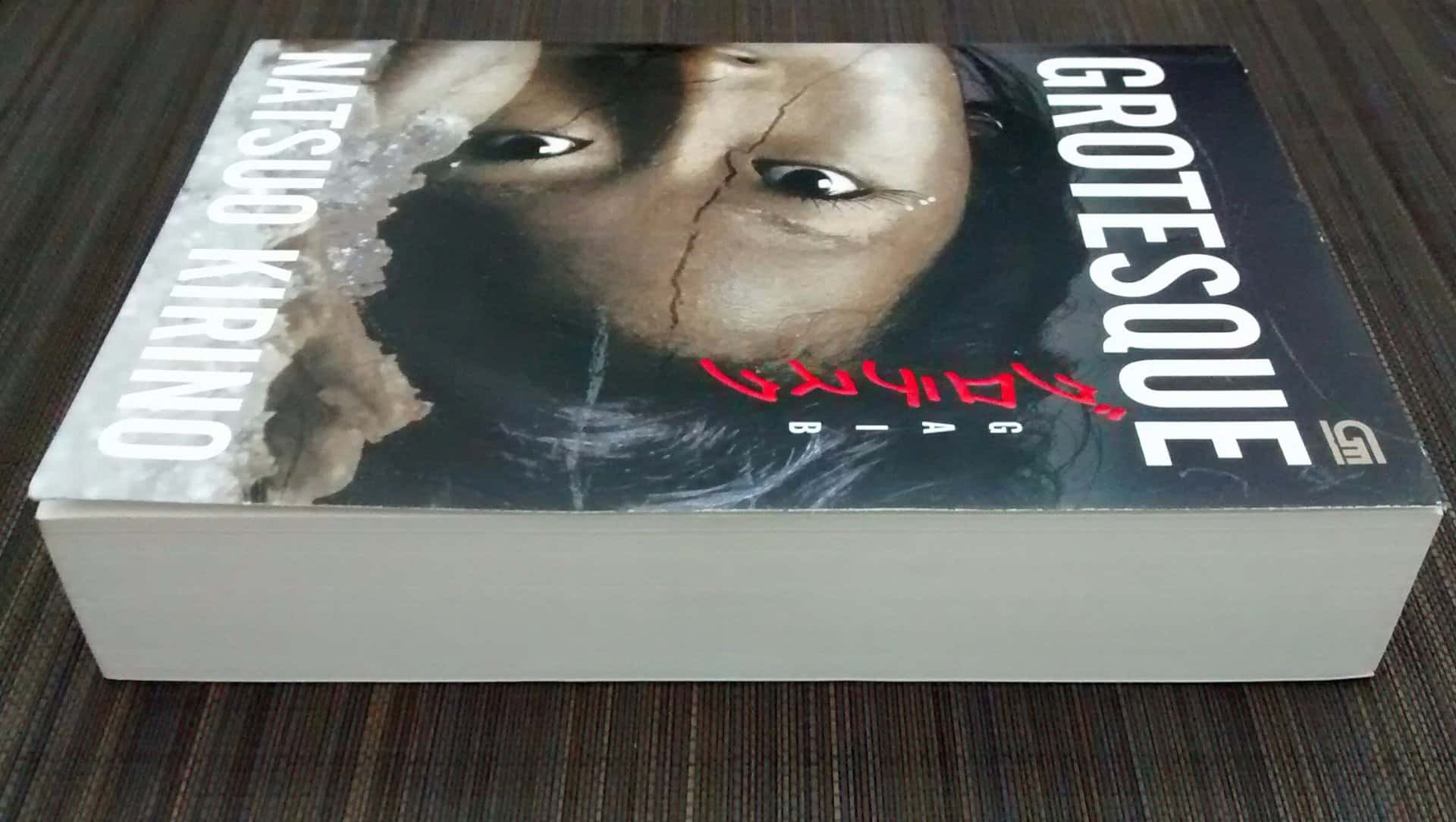According to Khavn: the script, which will be included in my book “Uncollected Screenplays”, is one of the longest I have written. It goes like this: Seven kings of seven tribes wearing the seven colors of the rainbow go on a quest looking for the Great Nothing. The film was shot in one day (Day-Old Flicks) and the actors are also the cinematographers and still photographers, as they pass the cameras around.
Watch This Title
The aforementioned seven kings all wear bahag, a loincloth that was worn by the indigenous Philippine population, according to descriptions by missionaries, during the 19th century. The spread of Christian morality discouraged its use, as it was perceived as an unacceptable form of attire. Now, seven individuals, including Khavn, pretending to be the descendants of majestic native rulers and at the same time, village idiots, wear the bahag as a symbol of their ethnicity and decide to visit various places in the city, travelling in an old VW truck, as they search for wala (nothing). Before that however, they drink various wines from coconut and rice, they fight among themselves, go to parallel universes, use a toilet in the middle of a field in an unprecedented way, and spend some time moving towards and away from the camera, occasionally backwards.
As they arrive in the city, obviously offending everyone around them with their appearance, they enter different stores, including a shoe shop and a book store, where they meet the undercover White King, who gets his share of mocking as the representation of the colonialists. Very fittingly, their trip ends with their arrest at the Araneta Gateway Mall in Cubao, which is run by the Araneta family, an influential Filipino family that originated from the Basque region and currently has influence over multiple enterprises along with the catholic clergy.
Khavn directs a very daring film, as the whole concept of a group of grown men wearing just loincloths entering various shops is definitely preposterous by any standards, with their eventual arrest (even if they were just released a few hours later) being the inevitable outcome.
At the same time however, through this extreme concept, Khavn makes a number of sociophilosophical comments, mostly revolving around colonialism. In that regard, he ponders on the reasons that led the traditional Filipino attire to be considered offensive, and thus, the ways colonialism and Christianity altered the way of thinking of a whole society, to the point that anything originally ethnic now seems completely foreign. That the group is only arrested when they reach the establishment of a family that seems to be the personification of colonialism and Christianity can only be considered as a very meaningful but also quite ironic coincidence.
The narrative is split in two, with the first part, outside the city, being more chaotic and essentially surrealistic, and the second, more realistic, even despite the absurdity. Khavn's approach however, despite this combination of feature and documentary/mockumentary, is more playful than serious (check how he introduces himself when asked by the police), occasionally bordering on the preposterous and the crude. The way the scenes in the van, including the voices of the protagonists being replaced by baby cries, function as transition between the various places the kings visit, is a distinct sample of this approach..
Khavn also implements silent movie aesthetics, with the protagonists speaking very rarely (essentially only in the police precinct) and their words being delivered through text on black screens. Apart from that, and particularly in the first part, Khavn uses a number of visual techniques, with frames inside frames, abrupt cuts etc, all of which fit the overall chaotic narrative. Music plays again a very important factor, with the main, homonymous theme being particularly interesting, communicating a punk essence to the whole of the movie.

Lastly, the finale cements the mockumentary aspect of the narrative, with Khavn and the rest of the crew discussing what happened during the shooting, frequently bursting into laughter.
“Bahag Kings” is another ingeniously preposterous film mix by Khavn, which manages to communicate a number of serious comments through a chaotically absurd approach.
















